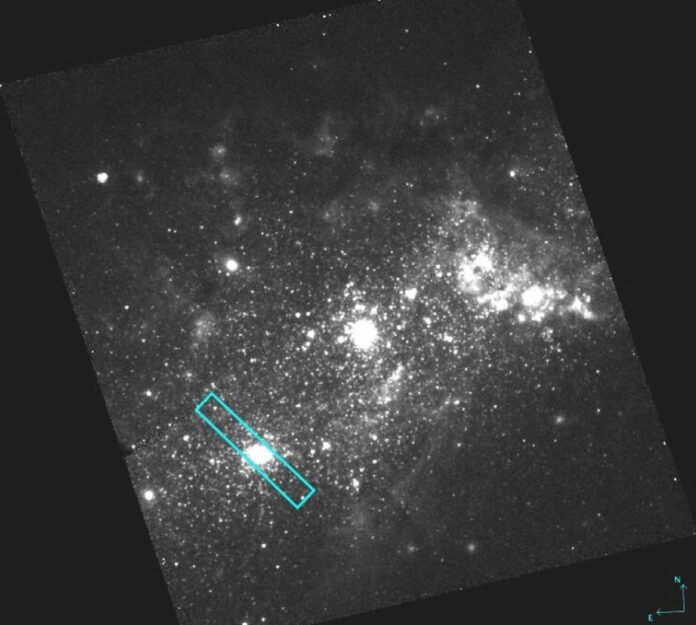Astronomers from Radboud University in the Netherlands and elsewhere used the Keck Observatory to conduct spectroscopic observations of NGC 1569-B, a young massive cluster. The results of the observational campaign, which were published on the arXiv pre-print server on September 23, provide important insights into the chemical composition of this cluster.
Young massive clusters (YMCs) are dense aggregates of young stars that serve as the basic building blocks of galaxies. The study of their chemical composition could provide vital information about stellar populations.
NGC 1569-B is a YMC in the dwarf irregular galaxy NGC 1569, located about 6,000 light years away from Earth. It is estimated to be 15-25 million years old. NGC 1569-B has a mass of approximately 440,000 solar masses, making it more massive than any of the Milky Way’s or Large Magellanic Cloud’s young clusters (LMC). Such massive clusters are extremely rare in our galaxy, and even more so in the Local Group.
Anastasia Gvozdenko led a team of astronomers who used the high-resolution echelle spectrometer (HIRES) on Mauna Kea’s Keck I 10-m telescope to investigate NGC 1569-B. The primary goal of their research was to conduct a detailed chemical abundance analysis of this cluster.
“We examined the YMC NGC 1569-B’s IL [integrated-light] spectrum at high resolution. This is the first detailed abundance study of this YMC that has been conducted using the entire optical wavelength range “The researchers wrote about it in their paper.
The observations revealed that NGC 1569-B is slightly metal-poor, with a metallicity of 0.77. It displays the majority of the iron-peak element abundance ratios found in Milky Way thick disc or LMC bar stars. It is worth noting that the cluster has a particularly high titanium abundance of about 0.49.
The results also show that NGC 1569-B has a relatively high barium-to-iron abundance ratio. This could be due to the contribution of massive stars, but no evidence supporting this theory has been discovered.
Scandium to iron was discovered to have an unusually high abundance ratio. Because the authors of the paper are unable to explain this result at this time, more research into the chemical composition of NGC 1569-B is needed to develop a plausible hypothesis.
In summarising their findings, the researchers noted that the chemical abundances of NGC 1569-B are similar to those of another YMC that has recently been studied—NGC 1705-1. “The stellar populations of NGC 1569-B are similar to those of the YMC NGC 1705-1, which is located in a blue compact dwarf galaxy. Except for Sc and Ba, which are extremely super-solar in NGC 1569-B—and higher than in any other YMC studied so far, the two YMCs agree on alpha-elements and the majority of iron-peak elements “The astronomers reached a conclusion.

